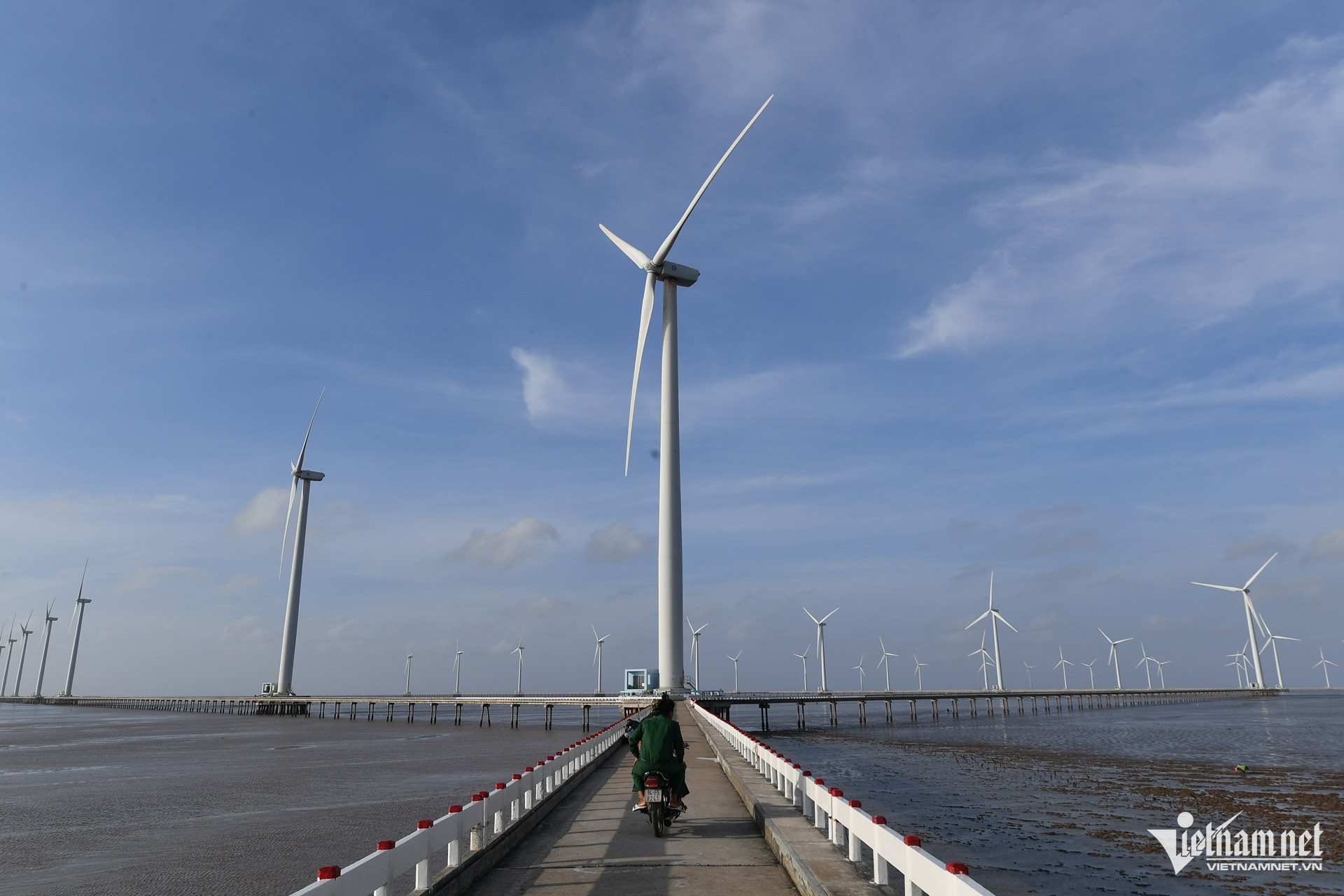
The Ministry of Industry and Trade has submitted explanations regarding the adjustments to Vietnam’s National Power Development Plan VIII, highlighting the allocation of LNG power projects and its decision not to consider a major corporation’s proposal to expand renewable energy sources at this stage.
In a report sent to the Prime Minister and Deputy Prime Minister Bui Thanh Son, the Ministry stated that to ensure sufficient electricity supply through 2035, northern Vietnam needs to develop an additional 7,900 MW of new LNG thermal power capacity compared to the approved Power Development Plan VIII.
Central and southern regions are not expected to add more capacity, instead continuing with approved projects.
Based on feedback from local authorities, the Ministry has analyzed and proposed the inclusion of several LNG projects into the 2031–2035 development phase. These include Phase I of the Hai Phong LNG project (1,600 MW), Quang Ninh 2 LNG (1,500 MW), Phase II of the Hai Phong LNG, Thai Binh LNG Phase 2, Hoa Ninh LNG Phase I, Thanh Hoa LNG, and the expansion of Ca Mau 1 and 2 thermal plants. These projects are included in the reserve list for the 2031–2035 period.
The Ministry observed that many LNG projects are facing delays and are unlikely to come into operation before 2030 as originally planned. Several projects approved long ago still lack selected investors and have not begun development.
It estimates that implementation of these LNG power sources will only reach around 57% during 2021–2025 and a mere 7.3% through the entire 2021–2030 period. This shortfall threatens the availability of essential base-load electricity, particularly in the north’s major demand centers, raising concerns about electricity supply and energy security.
As a result, the Ministry recommended rescheduling Phase I of the Hai Phong LNG project (1,600 MW) for operation in 2025–2030 to compensate for potential delays in the Nghi Son LNG project. It also proposed that Hai Phong LNG Phase II (3,200 MW) be operational during 2031–2035, replacing Quang Ninh 2 and Thai Binh LNG Phase 2.
The ministry also suggested moving the Hiep Phuoc LNG project into the official development list for the 2025–2030 phase to make up for delays at the Ca Na LNG project, while ensuring project efficiency and competitiveness.
Other projects - Thai Binh LNG Phase 2, Hoa Ninh LNG Phase I, Thanh Hoa LNG, and Ca Mau 1 and 2 expansions - will only proceed if approved to replace delayed projects or to meet unexpected demand surges.
No current consideration for additional large-scale renewable energy proposals
A major energy corporation had proposed adding 13,900 MW of solar power by 2030 (about 50% of the national increase of 27,882 MW), and 17,900 MW by 2035 (roughly 51.5% of the projected 34,769 MW).
For wind energy (onshore and nearshore), the corporation proposed an additional 6,600 MW by 2030 (40.1% of the national increase of 16,146 MW), and 9,100 MW by 2035 (149% of the national increase of 6,096 MW).
However, the Ministry stated that most of the proposed capacity across provinces already fits within the total planned allocations in the adjusted Power Development Plan VIII.
The Ministry emphasized that renewable energy project proposals must comply with legal procedures on investment and bidding in coordination with local authorities.
Furthermore, Plan VIII has already been optimized to minimize system costs through careful allocation by energy source. Adding extra capacity in certain regions, as proposed, would exceed the plan’s balanced structure and necessitate a complete reassessment of each source type, requiring further consultation with ministries, agencies, and the review council. This would jeopardize the timeline for plan approval as set by the Prime Minister.
Additionally, these are merely proposals to supplement energy capacity, without any detailed studies on grid connection, load capacity, or system operation feasibility.
For now, the Ministry recommends not considering the renewable energy expansion proposal. During implementation, the Ministry will continue reviewing the situation and may propose renewable additions if demand spikes or other renewable projects stall.
Tam An